INTERNACIONAL
A year after Hamas tunnel executions, Israel honors ‘Beautiful Six’ as hostage debate intensifies
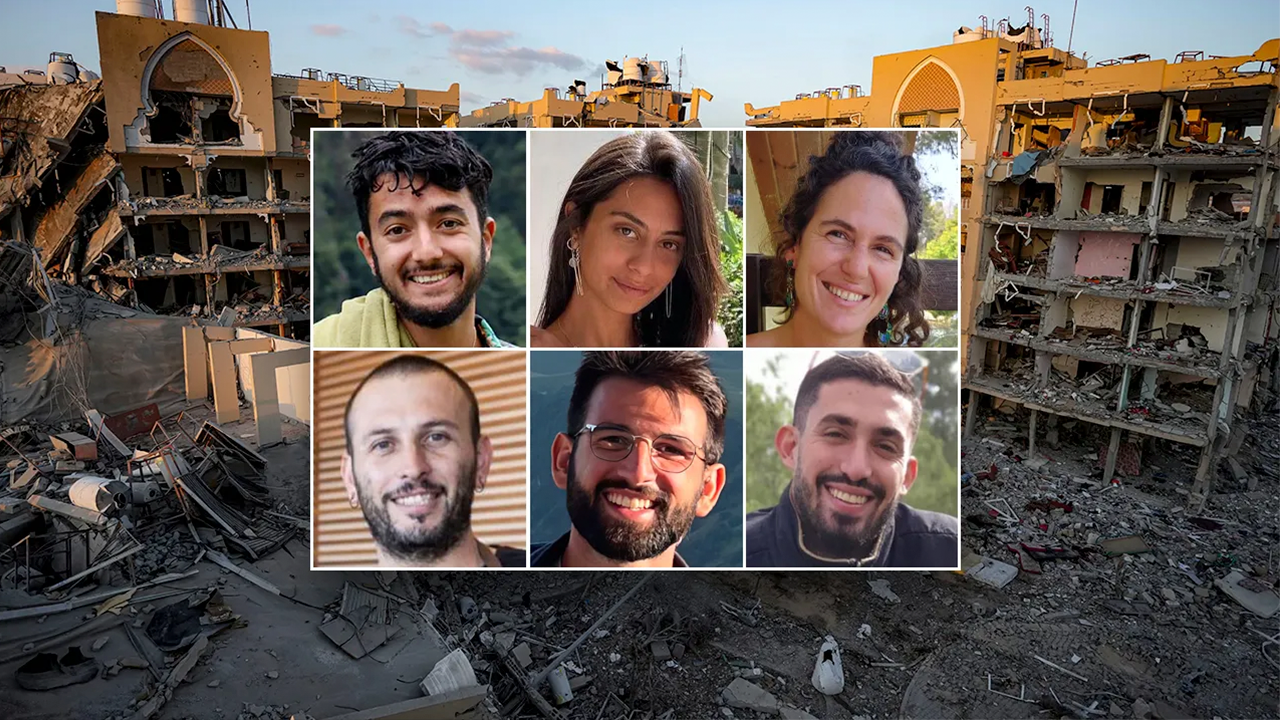
NEWYou can now listen to Fox News articles!
TEL AVIV, Israel — Israelis on Saturday marked one year since IDF soldiers recovered the bodies of six hostages executed by Hamas terrorists in a tunnel in the Gaza Strip.
Organizers estimated nearly 100,000 Israelis gathered in Tel Aviv’s Hostages Square to remember them as family members called on the government to make a deal to bring their loved ones home. A giant flag was unveiled calling on President Trump to «Make History.»
The executions plunged Israel into mourning. The hostages were Eden Yerushalmi, Ori Danino, Carmel Gat, Almog Sarusi, Alexander Lobanov and American-Israeli Hersh Goldberg-Polin.
«How do you sum up in a few words what you want to be remembered about your only son? He was a gift, a blessing, a talented listener, funny, respectful and a curious citizen of the world,» Jon Polin and Rachel Goldberg-Polin, Hersh’s parents, told Fox News Digital.
BODY OF ISRAELI HOSTAGE WHO WAS HELD FOR NEARLY 700 DAYS IN GAZA IS RECOVERED
American hostage Hersh Goldberg-Polin, 23, along with Eden Yerushalmi, 24, Carmel Gat, 40, Alex Lobanov, 32, Almog Sarusi, 27, and Ori Danino, 25, were brutally murdered by Hamas right before a rescue attempt by the IDF on Aug 2024. (Fox News)
«He will always be 23. He was not perfect, although most of us parents want to believe that about our children. But he was, indeed, the perfect son for us. We are blessed to have had Hersh in our life. We only wish it had been for longer. Rest peacefully, sweet boy,» they added.
The anniversary coincides with Israel’s new operation into Gaza City, which has led to a fierce debate on whether it could endanger the remaining hostages, given what happened to the «Beautiful Six.»
The Hostage and Missing Families Forum warned that a deal to secure the hostages remains stalled as IDF operations advance, calling it «a painful reminder of last year’s lesson: military pressure kills hostages.»
«This nightmare must end! For 694 days, our loved ones have endured hell, and we as a nation have lost all sense of direction. Escalating military pressure abandons the living hostages to their fate and leaves the bodies of those already dead buried forever in Gaza’s rubble,» the statement added.
On Friday, the IDF announced that it had recovered the bodies of two hostages held by Palestinian terrorists in Gaza.
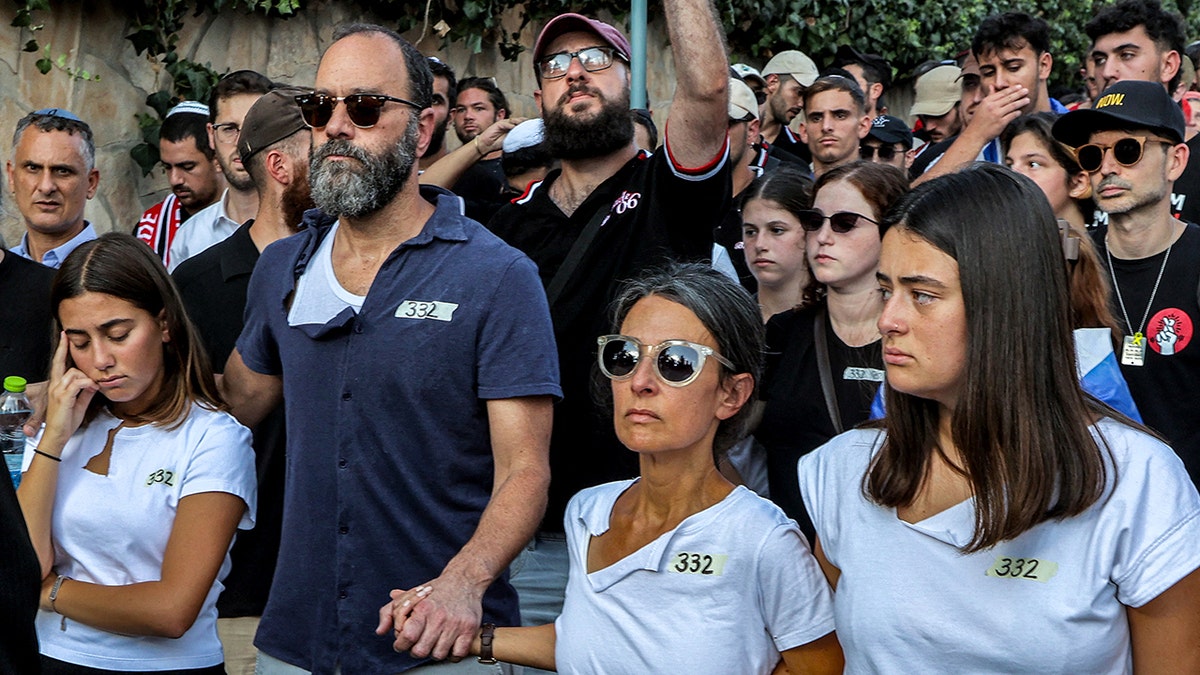
Jonathan Polin and Rachel Goldberg-Polin, the parents of murdered U.S.-Israeli hostage Hersh Goldberg-Polin, attend his funeral in Jerusalem on Sept. 2024. (Gil Cohen-Magen/Pool/AFP via Getty Images)
Israeli estimates indicate that 48 captives remain in the Strip, 20 are believed to be alive.
The developments come as Prime Minister Benjamin Netanyahu has insisted that only a comprehensive ceasefire—one that ensures the return of all hostages and ends the war on Israel’s terms—will be considered.
«Most families want all hostages returned at once,» said Tzvika Mor, father of hostage Eitan Mor and co-founder of the Tikva Forum, which advocates for a full deal contingent on the elimination of Hamas.
BROTHER OF ISRAELI HOSTAGE URGES UN TO ACT AFTER VIDEO SHOWS HAMAS STARVING AND TORTURING CAPTIVES
«Here is where we are divided,» Mor told Fox News Digital. «The Tikva Forum believes Hamas must be defeated and forced to surrender to Israel, while other families believe Israel must surrender to Hamas to rescue the hostages.»
Mor pointed to the 1976 Entebbe rescue as an example, noting that while the outcome was uncertain at the time, Israelis widely believed the country had a duty to fight for its citizens rather than capitulate to terrorists. He argued that although military action carries risks, the far greater danger would be allowing Hamas to dictate terms after Oct. 7.
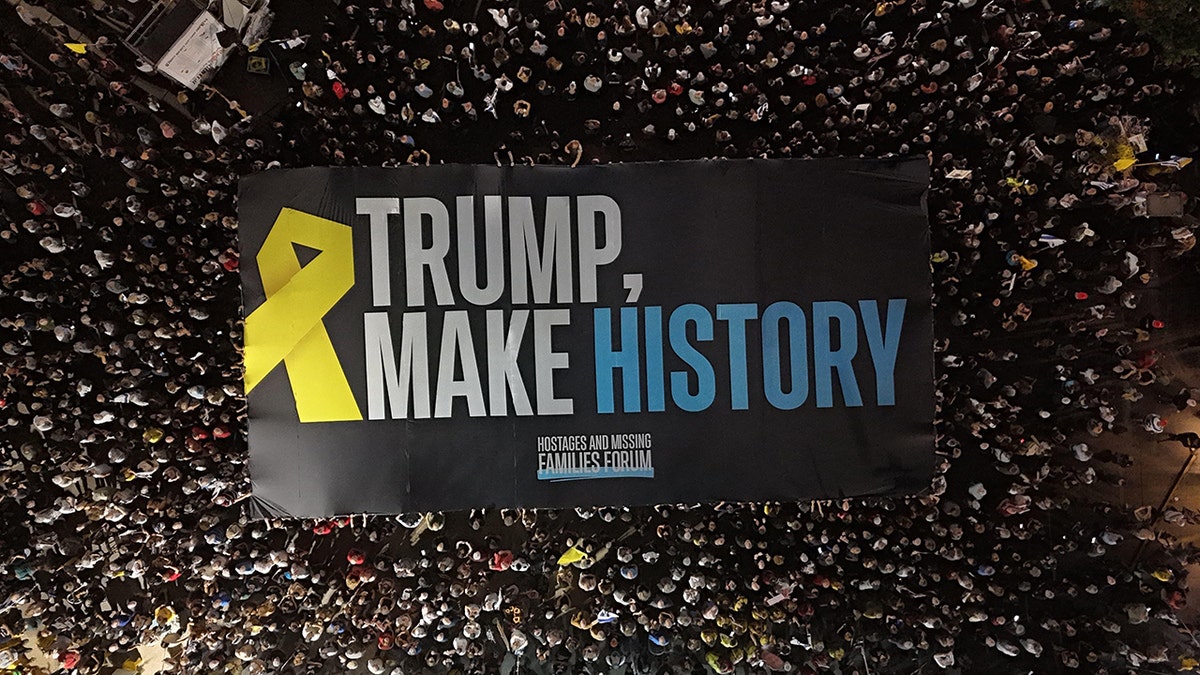
(Amit Goldstein//The Hostages and Missing Families Forum)
On Monday, Donald Trump suggested that the conflict would be wrapped up within weeks. Two days later, he chaired a meeting at the White House to discuss a comprehensive post-war plan for Gaza.
U.S. Special Envoy to the Middle East Steve Witkoff told Fox News on Tuesday that the Trump administration is aligned with Jerusalem against a partial deal.
«There’s been a deal on the table for the last six or seven weeks that would have released 10 of the hostages out of the 20 that we think are alive and it was Hamas who slow-played that process, and it is Hamas now who is saying we accept that deal. And I think in large part they are saying that and changing their mind because the Israelis are putting some very intense pressure on them,» Witkoff told Bret Baier on Fox News’ «Special Report.»
Israeli Opposition Leader Yair Lapid told Fox News Digital that his Yesh Atid Party supports «a full comprehensive deal which will include the return of all the hostages and an end to the war.
CLICK HERE TO GET THE FOX NEWS APP
«If that deal isn’t possible,» he continued, «then Israel should accept the partial deal that has been agreed to, which will give us time to achieve a full deal.»
Netanyahu told visiting Sen. Joni Ernst, R-Iowa, on Monday that the decision to expand the military campaign was «unequivocal.»
israel,middle east,conflicts,terrorism,anti semitism
INTERNACIONAL
Las grandes ciudades modernas desafían la biología humana y podrían afectar su evolución, afirma un estudio

Vivir en grandes ciudades representa, para los científicos evolucionistas de la Universidad de Loughborough y la Universidad de Zúrich, un reto para la naturaleza humana. Según advierten, la acelerada urbanización desborda la capacidad de adaptación de nuestra especie y afecta el bienestar físico y mental.
El ser humano comenzó a modificar su entorno hace miles de años, pero la industrialización del siglo XVIII aceleró radicalmente la transformación del hábitat. En la actualidad, la mayor parte de la población mundial reside en áreas urbanas densas, expuesta a contaminación, ruido, luz artificial y con acceso limitado a la naturaleza.
En países como Canadá, Estados Unidos y Reino Unido, se estima que las personas pasan hasta el 93% del tiempo en espacios cerrados. Estas condiciones representan una ruptura drástica respecto de las que predominaron durante la evolución de la especie.

Según datos de la ONU citados en Biological Reviews, en 2018 el 55% de la humanidad ya vivía en ciudades y, para 2050, la cifra superará el 68%. Así, el Homo sapiens se ha convertido en una especie urbana, enfrentando desafíos que su biología no termina de asimilar.
La denominada hipótesis del desajuste ambiental advierte que la evolución humana, calibrada durante miles de generaciones en entornos naturales, no puede seguir el ritmo vertiginoso de las transformaciones urbanas.
“Nuestra biología fue moldeada por entornos naturales, pero la industrialización transformó el mundo más rápido de lo que nuestros cuerpos pueden adaptarse”, señaló Danny Longman, especialista en fisiología evolutiva humana de la Universidad de Loughborough, a Newsweek. Ese desfase —denominado “lag adaptativo”— expone al organismo a nuevos riesgos y desajustes para los que no está preparado.

- Función reproductiva: la fertilidad mundial desciende, y dos tercios de la población viven en países con tasas por debajo del reemplazo. Biological Reviews atribuye esta tendencia, entre otros factores, a la exposición cotidiana a contaminantes como pesticidas, microplásticos y productos químicos industriales. Estas sustancias alteran la producción hormonal y afectan la calidad del esperma y la salud reproductiva tanto de hombres como de mujeres.
- Función inmunológica: el sistema inmunitario humano resulta menos eficiente en contextos urbanos por la menor exposición a microorganismos beneficiosos y el aumento de agentes contaminantes en el aire, el ruido y la luz artificial. Esto favorece las alergias, enfermedades autoinmunes e inflamaciones crónicas. Estudios recientes indican que niños y adultos urbanos muestran más alergias y menor respuesta inmunitaria que quienes viven en contacto frecuente con la naturaleza.
- Cognición: la sobrestimulación digital, el ruido, la contaminación y la falta de áreas verdes impactan en la atención, la memoria y la flexibilidad mental. Investigaciones muestran que quienes crecen en barrios densamente urbanizados presentan desarrollos cognitivos más lentos y mayores riesgos de deterioro cerebral en la adultez. Incluso caminar en entornos urbanos puede disminuir el rendimiento intelectual frente al contacto con la naturaleza.
- Condición física: la fuerza y la resistencia físicas también se ven perjudicadas por el sedentarismo, la contaminación y la ausencia de espacios verdes. Niños y adolescentes urbanos tienen peor condición cardiovascular y muscular en comparación con sus pares rurales. En personas adultas, la debilidad y el declive funcional aparecen a edades más tempranas, relacionados con la exposición a partículas contaminantes y la falta de movimiento.

El estrés crónico es uno de los efectos más extendidos de la vida urbana. “El ruido constante, las multitudes, el tráfico, la sobrecarga digital y la escasez de escenarios naturales mantienen nuestro sistema de alerta en estado de activación permanente”, advierte Longman. Esto se traduce en aumento de ansiedad, alteraciones del sueño, trastornos cardiovasculares, síntomas inmunológicos y reproductivos, y deterioro cognitivo.
La evidencia científica lo respalda: Biological Reviews confirma que la exposición diaria a ambientes industrializados incrementa los biomarcadores de estrés y eleva la incidencia de trastornos psicológicos y físicos. Por el contrario, la presencia de espacios verdes en el entorno actúa como factor protector, moderando los efectos negativos del estrés y mejorando la salud integral.
El trabajo liderado por Longman y su equipo señala que la biología de nuestra especie está profundamente condicionada por la herencia evolutiva en contacto con la naturaleza, lo que vuelve difícil la adaptación a un entorno urbano hiperacelerado y artificial. Según los autores, el desajuste entre el diseño biológico y el hábitat citadino explica en buena parte la tendencia al aumento de problemas reproductivos, inmunológicos, cognitivos y físicos observados en poblaciones urbanas.
El análisis final sugiere que el proceso de urbanización, si bien aportó avances tecnológicos y sociales, también ha generado consecuencias imprevistas a nivel biológico. En síntesis, la especie humana enfrenta el desafío evolutivo de habitar ciudades que en muchos aspectos resultan incompatibles con su organismo.
Cityscape,Society / Social Issues,North America
INTERNACIONAL
Obama wanted shutdown pain to be felt by Americans, while Trump kept focus on Washington, experts argue
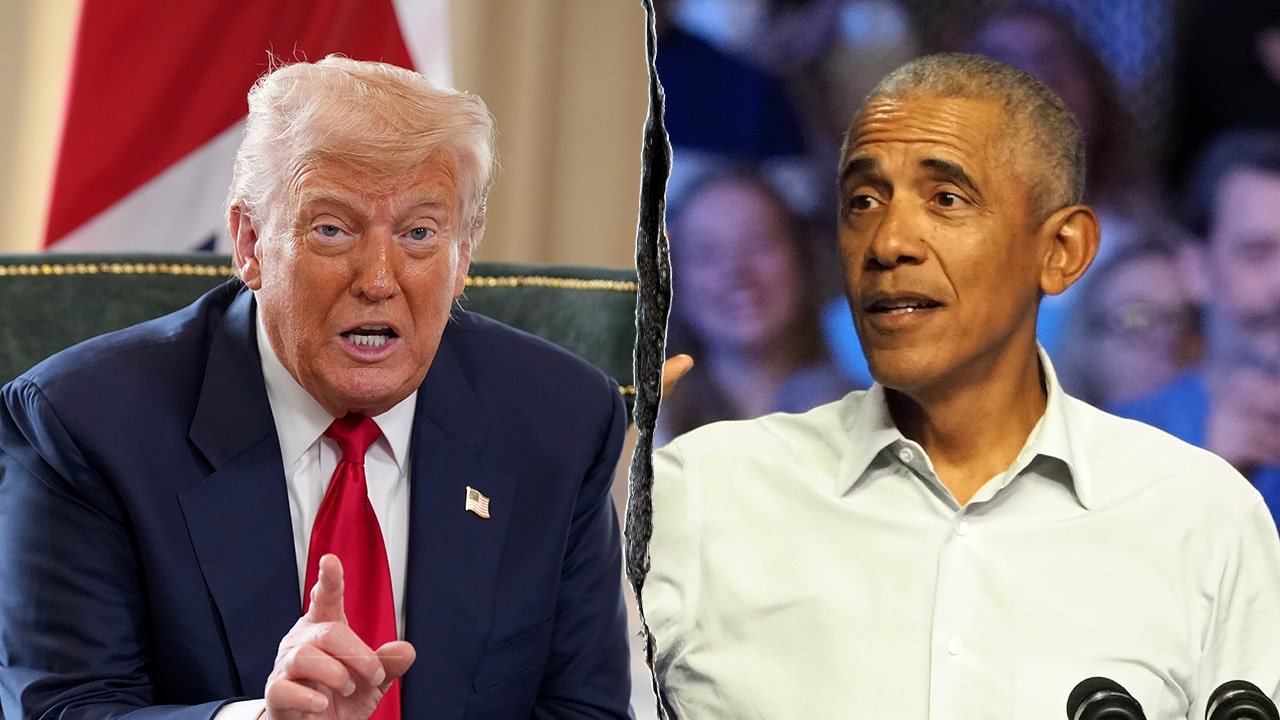
NEWYou can now listen to Fox News articles!
President Donald Trump and former President Barack Obama are polar opposites in many ways, but, as with anyone who has sat behind the Resolute Desk, they do share some similarities.
One thing both have in common is overseeing government shutdowns — one under Obama and two under Trump. And even in that sparse similarity, both men operated differently, particularly in the most recent, 43-day closure.
While both congressional battles were centered on Obamacare, Obama put his shutdown at the center of attention, while Trump kept it at more of an arm’s length.
HOW CLOSED-DOOR NEGOTIATIONS AND A GUARANTEE ENDED LONGEST GOVERNMENT SHUTDOWN ON RECORD
President Donald Trump and former President Barack Obama handled their respective shutdowns differently, though healthcare proved to be a common thread in both. (Andrew Harnik/Getty Images; Debra L Rothenberg/WireImage)
Romina Boccia, director of budget and entitlement policy at the Cato Institute, told Fox News Digital that a major difference in the Obama and Trump administrations’ approaches to their respective shutdowns was that in 2013, Obama wanted the pain of shutdown to be felt by Americans, while Trump kept the focus centered on Washington, D.C.
«During the Obama shutdown, it was more to make it extremely visible, shut down beloved functions — even if you didn’t have to — that affect average Americans,» she said.
Boccia at the time worked for the conservative think-tank the Heritage Foundation and recalled the barricades that were swiftly erected around Washington, D.C.’s many national parks.
Those barricades, both concrete and human, spilled out beyond the nation’s capital and were placed around the hundreds of national parks across America as a stark reminder that the government was closed.
Boccia noted that a direct comparison of the two shutdowns would be difficult given the differing lengths, but that the Trump administration, at least early on, sought to inflict direct pain on congressional Democrats and the federal government.
GOP UNITY SHATTERED BY CONTROVERSIAL MEASURE IN GOVERNMENT SHUTDOWN BILL
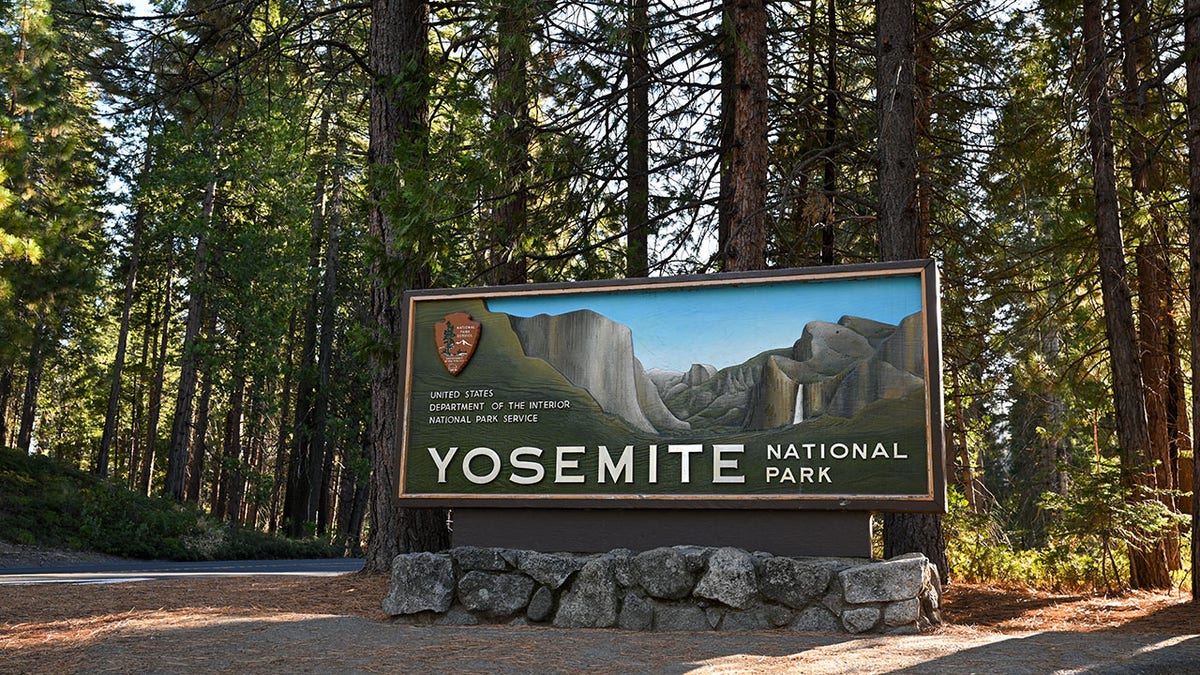
A welcome sign is seen at Yosemite National Park in California on Dec. 13, 2023. (Tayfun Coskun/Anadolu via Getty Images)
That was carried out largely by the Office of Management and Budget Director Russ Vought, who ordered mass firings of furloughed workers and withheld or canceled billions in federal funding to blue cities and states.
«It’s not that this wasn’t a shutdown, it’s just that the choices the administration made were an attempt to focus the impacts of the shutdown this round on the government itself,» Brittany Madni, executive vice president of the Economic Policy Innovation Center, told Fox News Digital.
«This was showmanship from President Obama,» Madni continued. «And if you look at what happened over the last 40 something days, it was the exact same playbook by congressional Democrats.»
Madni argued that discussions and debate during the 2013 shutdown were centered largely in Washington, D.C. The latest closure saw some of that, but it also saw Trump continuing to work on trade deals, particularly during his high-profile visit to Asia, which was a point of contention for Democrats on the Hill.
«He was doing his job,» Madni said. «He was doing his job. Meanwhile, congressional Democrats, quite simply, were not.»
Still, there was a shared thread in both shutdowns: Obamacare.
In 2013, congressional Republicans wanted to dismantle Obama’s signature piece of legislation. Fast-forward, Senate Minority Leader Chuck Schumer, D-N.Y., led his caucus to push extensions to enhanced Obamacare subsidies.
Boccia said that played a large part in why Obama was at the vanguard during his shutdown.
«He was front and center in the media talking about the shutdown, and because it was over his legacy achievement,» she said.
SENATE REACHES TEMPORARY TRUCE TO END RECORD SHUTDOWN, BUT JANUARY BATTLE LOOMS

Senate Minority Leader Charles Schumer after a news conference in the U.S. Capitol on Nov. 5, 2025. (Tom Williams/Getty Images)
It was because his key legislative achievement was under fire that Obama took such a central role in the shutdown, Boccia argued, but for Trump, who tried during his first administration to gut and replace Obamacare, it wasn’t a priority.
«The fact that it was over the Obamacare COVID credits, I think, made the president less necessary and perhaps interested in being the face of the shutdown,» she said. «It was really a congressional battle.»
Madni disagreed that the latest shutdown wasn’t a direct bid by congressional Democrats to go after one of his legislative achievements.
Before the climactic failed vote in the Senate in late September that ushered in the longest shutdown in history, Democrats offered a counter-proposal that would have stripped several provisions from Trump’s «big, beautiful bill,» which has so far been the crowning legislative achievement of his second term.
CLICK HERE TO DOWNLOAD THE FOX NEWS APP
«It’s really important that everyone remembers the subsidy request was one request in a laundry list of radical, incredibly expensive ideas that added up to $1.5 trillion,» Madni said. «Another item in that list was dismantling key portions of the One Big Beautiful Bill Act.»
«If this was really about the subsidies, then the Democrats would have been willing at any point during the last 43 days to adjust their asks and just make it about subsidies,» she continued. «Not once did they.»
donald trump,barack obama,government shutdown,health care healthy living,politics
INTERNACIONAL
La nieta de John F. Kennedy contó que le diagnosticaron cáncer terminal el mismo día que nació su segundo hijo
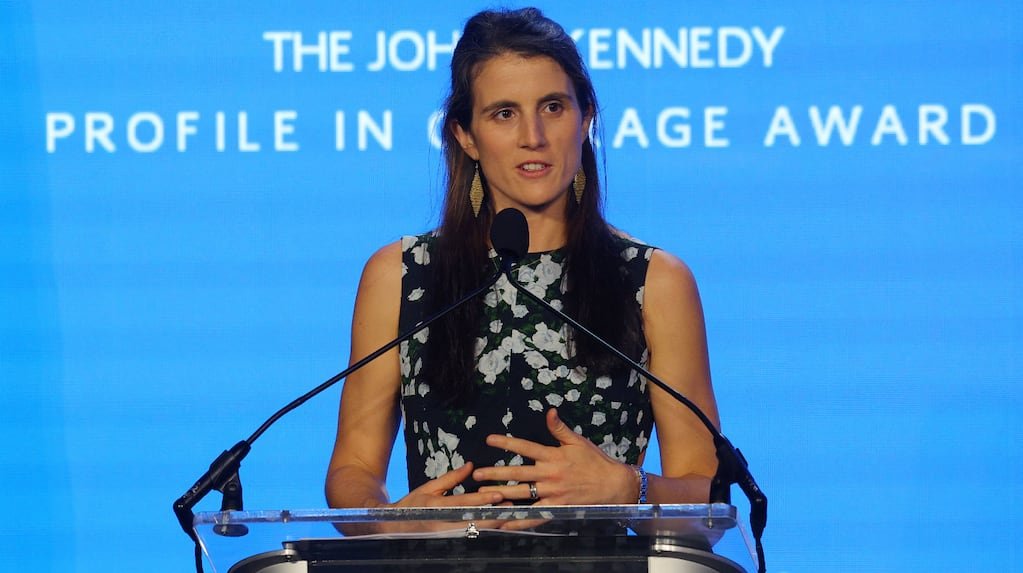
La nieta de John F. Kennedy, Tatiana Schlossberg, hizo una dolorosa revelación: en un escrito a corazón abierto, contó que padece cáncer terminal y que se enteró del diagnóstico el mismo día que nació su beba.
La impactante noticia llegó en mayo del año pasado, cuando tenía 34 años. Acababa de ser madre por segunda vez y un análisis de rutina mostró un elevado número de glóbulos blancos que se transformó en un resultado devastador: una variante con una mutación poco frecuente de una leucemia mieloide aguda.
Leé también: Alineamiento con EE.UU. y Medio Oriente: las razones del histórico cambio de postura de la Argentina en el G20
En el ensayo publicado en The New Yorker Tatiana reveló que uno de los médicos que la atiende le advirtió que podría llegar a tener solo “un año más de vida” debido a la gravedad de su cuadro.
“No podía creer que estuvieran hablando de mí. El día anterior había nadado una milla con nueve meses de embarazo. No estaba enferma”, escribió en el inicio del artículo..
A partir del diagnóstico, la mujer atravesó múltiples rondas de quimioterapia, dos trasplantes de médula ósea —el primero con células de su hermana y el segundo de un donante anónimo— y participó en ensayos clínicos experimentales. En un ensayo a corazón abierto, Schlossberg habló de la dura situación que atraviesa. (Foto: REUTERS/Brian Snyder)
En septiembre, además, le diagnosticaron una variante del virus de Epstein-Barr que afectó gravemente sus riñones y la obligó a aprender a caminar nuevamente.
“Me siento engañada y triste por no poder seguir viviendo la maravillosa vida que teníamos”, lamentó la periodista ambiental que está casada con el médico George Moran, con quien tiene dos hijos.
Durante su ensayo, Tatiana también criticó a Robert F. Kennedy Jr., sobrino de su madre y actual secretario de Salud en la administración Trump y sostuvo que las políticas que impulsa podrían perjudicar a pacientes como ella al recortar inversiones en vacunas de ARNm, tecnología que, según explicó, podría usarse contra ciertos tipos de cáncer. “Era una vergüenza para mí y para mi familia inmediata”, resaltó.
Leé también: Video: un tiroteo en plena celebración navideña terminó con cuatro heridos en Carolina del Norte
En el mismo sentido, sostuvo que los recortes federales podrían afectar a la institución en la que se trata: “De repente, el sistema de salud del que dependía se volvió inestable”, lamentó.
“Durante toda mi vida traté de ser buena hija, buena hermana, buena persona y ahora he agregado una nueva tragedia a nuestra familia, y no hay nada que pueda hacer para evitarlo”, expresó.
Schlossberg siente el peso de haber estado lejos de sus hijos, su beba de apenas poco más de un año y su hijo de 3 años, en momentos irrecuperables: no pudo cuidar a su hija por riesgo de infección y teme que, si muere, ellos apenas la recuerden. Por eso, asegura, busca dejarles buenos momentos: pequeños gestos, frases, escenas cotidianas que conserva como un archivo emocional ante la fragilidad del futuro.
Las tragedia de los Kennedy: la foto que muestra un momento antes del asesinato de John F. Kennedy (Foto archivo AP)
La periodista también le dedicó unas palabras a su pareja: “George hizo todo lo que pudo por mí. Habló con todos los médicos y aseguradoras con los que yo no quería hablar; durmió en el suelo del hospital; no se enojó cuando yo estaba furiosa por los esteroides y le grité que no me gustaba la cerveza Schweppes Ginger Ale, solo la Canada Dry. Iba a casa a acostar a nuestros hijos y volvía a traerme la cena».
Por otro lado, se refirió a su familia: “Mis padres, mi hermano y mi hermana también han criado a mis hijos y han estado en mis diversas habitaciones del hospital casi a diario durante el último año y medio. Me han sostenido con firmeza mientras he sufrido, intentando disimular su dolor y tristeza para protegerme. Esto ha sido un gran regalo, aunque siento su dolor a diario. Durante toda mi vida, he intentado ser buena, buena estudiante, buena hermana y buena hija, y proteger a mi madre y nunca hacerla enfadar ni molestar. Ahora he añadido una nueva tragedia a su vida, a la vida de nuestra familia, y no puedo hacer nada para detenerla”.
En paralelo a su lucha física, la escritora intenta sostener su identidad profesional: recuerda el libro sobre océanos que ya no podrá escribir y se aferra al sentido de su oficio para transmitirle a su hijo que su vida fue más que una larga enfermedad. Consciente de la posibilidad de un final cercano, la autora se mueve entre recuerdos de su infancia, escenas con sus hijos y reflexiones sobre la memoria y la muerte. Vive el presente como puede, aferrada al deseo de que esos momentos —aunque ella no pueda conservarlos— queden en la vida de quienes ama.
“Principalmente, intento vivir y estar con ellos ahora. Pero estar en el presente es más difícil de lo que parece, así que dejo que los recuerdos vayan y vengan. Son tantos de mi infancia que siento como si me viera crecer a mí misma y a mis hijos al mismo tiempo. A veces me engaño pensando que lo recordaré para siempre, que lo recordaré cuando muera. Obviamente, no. Pero como no sé cómo es la muerte y no hay nadie que me diga qué viene después, seguiré fingiendo. Seguiré intentando recordar”, concluyó.
Asesinatos y siniestros fatales: desde los crímenes de su abuelo John F. Kennedy en 1963 y de su tío abuelo Robert Kennedy en 1968, al accidente aéreo de su tío, John F. Kennedy Jr., en 1999, la historia de su familia está cargada de tragedias.
John F. Kennedy, nieta, Cáncer

 POLITICA2 días ago
POLITICA2 días agoTras la orden de decomiso de los bienes de CFK, la Justicia evalúa avanzar sobre el departamento de San José 1111

 POLITICA2 días ago
POLITICA2 días agoJavier Milei sobre las coimas en la ANDIS: “Hay mucha mala intención política”

 CHIMENTOS3 días ago
CHIMENTOS3 días agoEscándalo en MasterChef: cómo fingió Eugenia Tobal su eliminación tras la feroz pelea con Martitegui



























